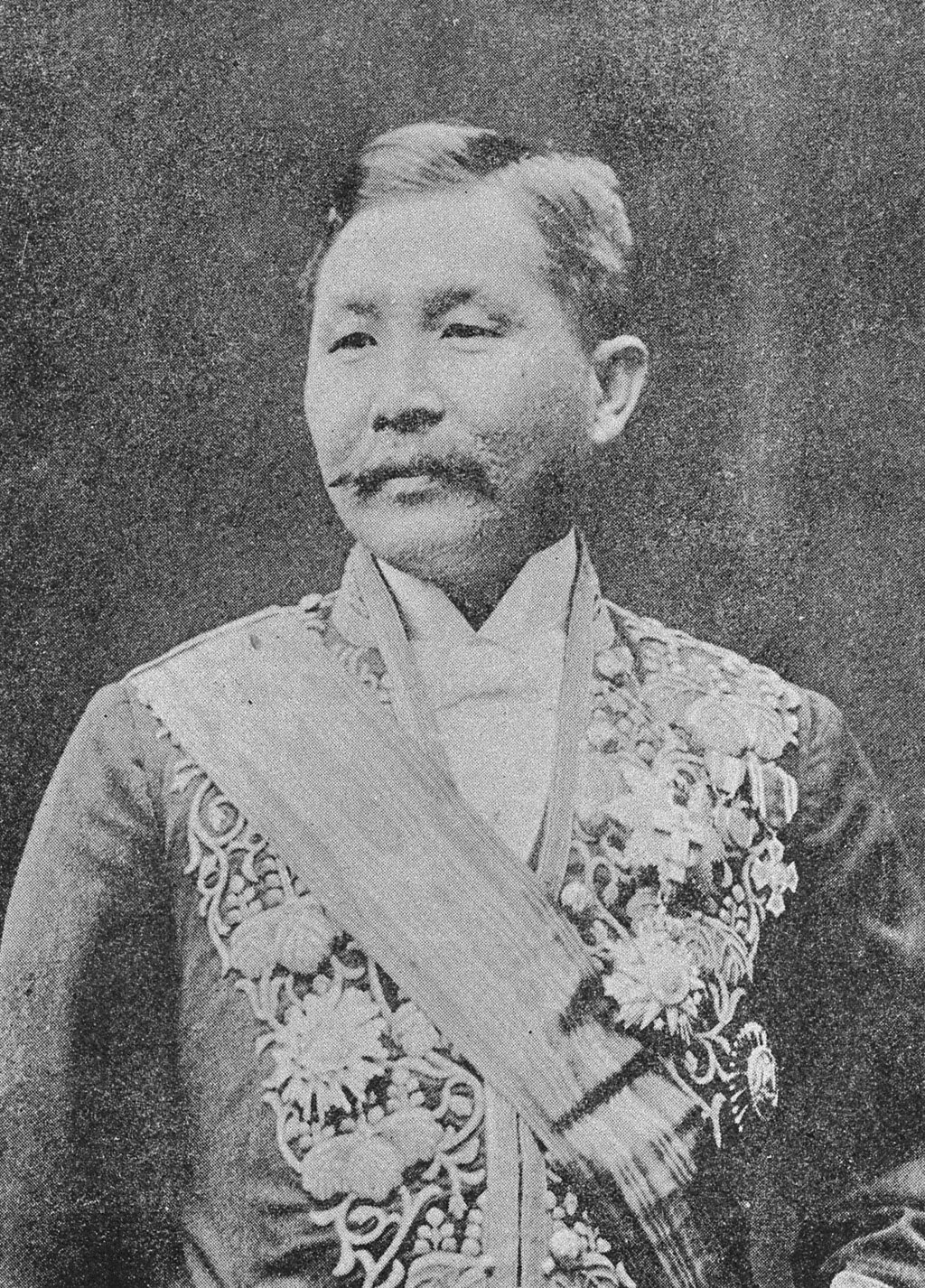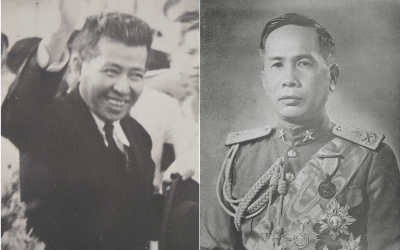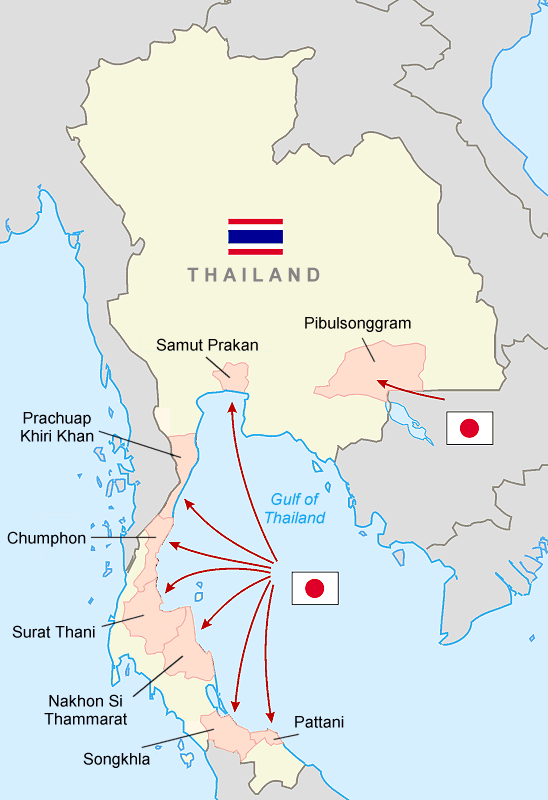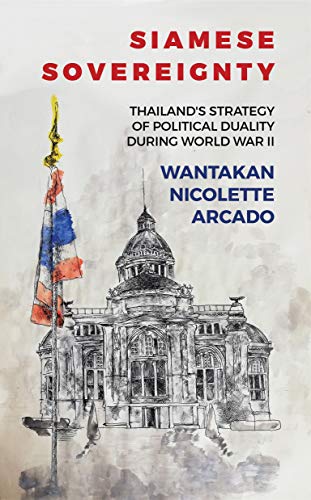- Home
- Stories
-
Internship
- Summer 2024 Internship
- Summer 2023 Internship
- Fall 2022 Internship
- Summer 2022 Internship
- Summer 2021 Internship
- Fall 2020- Spring 2021 Internship
- Summer 2020 Internship
- Fall 2019 Internship
- Summer 2019 Internship >
- School Year 2018-2019 Internship
- Summer 2018 Internship >
- Fall 2017 Internship
- Summer 2017 Internship >
- Books
- Archives
-
Resource Page
-
Supplementary Research Guides
>
- Unit 731 - Guide >
-
Philippines' Resistance - Guide
>
- Philippines World War II Timeline
- The Japanese Invasion & Conquest of the Philippines
- Bataan Death March
- Formation of Underground Philippines Resistance
- Supplies of the Guerrilla Fighters
- The Hukbalahap
- Hunter's ROTC
- Marking's Guerrillas
- United States Army Forces in the Philippines of Northern Luzon (USAFIP-NL)
- The Aetas
- Chinese and Filipino-Chinese Nationalist Guerrilla Units
- The Female Faces of the Philippine Guerrillas
- Rising Sun Flag - Guide >
- Pinay Guerrilleras - Guide >
- Fall of Singapore - Guide >
- Three Years and Eight Months - Guide >
- Siamese Sovereignty - Guide >
- The Khabarovsk War Crimes Trial - Guide >
- Unit 731 Cover-up : The Operation Paperclip of the East - Guide >
- Marutas of Unit 731 - Guide >
- Prince Konoe Memoir - Guide >
- Competing Empires in Burma - Guide >
- Battle of Shanghai - Guide >
- Ishi Shiro - Guide >
- Taiwan The Israel of the East - Guide >
- Seeking Justice for Biological Warfare Victims of Unit 731 - Guide >
- Rice and Revolution - Guide >
- Clash of Empires - Guide >
-
Hunger for Power and Self-SufficiencyI - Guide
>
- The Influence of War Rations on Post-War Culinary Transformations
- How World War II Complicated Food Scarcity and Invention
- American Military Innovations
- Government-Sponsored Food Inventions in Europe during World War II
- Feeding the Army: The Adaptation of Japanese Military Cuisine and Its Impact on the Philippines
- Mixed Dishes: Culinary Innovations Driven by Necessity and Food Scarcity
-
Denial A Quick Look of History of Comfort Women and Present Days’ Complication - Guide
>
- The Comfort Women System and the Fight for Recognition
- The Role of Activism and International Pressure
- The Controversy over Japanese History Textbooks
- The Sonyŏsang Statue and the Symbolism of Public Memorials
- Activism and Support from Japanese Citizens
- The Future of Comfort Women Memorials and Education
- Echoes of Empire: The Power of Japanese Propaganda - Guide >
- Lesson Plans >
-
Supplementary Research Guides
>
|
Early Thailand and Japanese contact can be traced to the 15th century. The two country’s early interactions were transactional in nature, ultimately boiling down to trade and overseas cultural missions. One official who really sparked the charge for extensive Japanese-Thai alliance was Inagaki Manjiro, the General Secretary of the Oriental Association (Tōyō Kyōkai). After the successful invasion and capture of Manchuria (Manchukuo) in 1895, Inagaki promoted the idea of creating a sphere of influence in the Pacific. In particular, Inagaki sought to create a diplomatic defense in the region and lobbied the Japanese government to establish relations with Siam. He was chosen to represent Japan at the foreign conference, including an 1897-1898 negotiation regarding extraterritoriality rights.
|
Power Struggle between Phibun and Pridi
The 1932 coup d'état transformed the fabric of Thai society, replacing the system of Absolute Monarchy with a Constitutional Monarchy and introducing the country to its very first constitution. Despite tremendous accomplishments, the Promoters split due to alienating ideological differences with Phibun leading the military faction and Pridi leading the civilian faction. Unfortunately, Pridi’s ideas were soon deemed communist. The National Assembly was soon dissolved and Pridi was forced into exile. While retreating to France, Pridi’s polar opposite and political foil, Phibun, rose to prominence.
Phibun led a second successful coup in June 1933 and quashed the October 1933 Boworadet rebellion led by royalist Prince Boworade and his allies. Phibun emerged as a Thai national hero and by 1938, assumed the position of both Prime Minister and Commander of the Royal Siamese Army.
Phibun led a second successful coup in June 1933 and quashed the October 1933 Boworadet rebellion led by royalist Prince Boworade and his allies. Phibun emerged as a Thai national hero and by 1938, assumed the position of both Prime Minister and Commander of the Royal Siamese Army.
Photo of Pridi Banomyong (Left) and Plaek Phibunsongkhram (Right)
The Vote
Thailand’s unexpected international response to Japan’s seizure of Manchuria proved to be a pivotal event in building future Thai-Japanese relations.
The United States terminated the 1902 Ango-Japanese alliance and effective banned Japanese immigration through the enactment of the 1924 National Origins Act, also known as the Japanese Exclusion Act. Such discriminatory legislation defined the turning point of U.S.-Japanese relations, with feelings of frustration, betrayal, and humiliation transforming into a physical assault on U.S. territory with the attack on Pearl Harbor several years later.
The effects of the Great Depression and the Great Kanto Earthquake of 1923 plunged Japan through a series of both political and financial instabilities. The results of this instability giving rise to the strength of financial conglomerates known as zaibatsus (財閥), who would later go to fund Japan’s military-industrial complex during the war.
With both external pressures from Western foreign policies as well as internal pressures from continuously growing ultranationalist campaigns, Japan soon found itself pursuing the expansionist route. Feeling alienated from the world, Japan shifting its focus from isolationism to full-on invasion.
Japan soon launched an attack against China known as the Mukden Incident (beginning on September 18, 1931), proceeding with a full invasion of Manchuria six months later. In February 1933, a vote was held in the League of Nations to condemn the Japanese occupation of Manchuria. In protest, the Japanese delegation walked out of the room. The only country that chose to abstain, was Thailand. While arguably the decision seemed to stem from Thailand’s wish to stay neutral, the act served as a symbol of solidarity for the Japanese.
Phibun capitalized on this conviction. Through political strategy, he used growing Japanese interest in Thailand as leverage against the U.S. and Britain, who were insistent that Thailand not yielding to Japanese advances. Under the leadership of Ambassador Sir Josiah Crosby (served 1934–1941), Britain built stronger ties with Siam and competed against the Japanese for influence in Bangkok. Utilizing this newly found leverage, Thailand convinced the British to surrender extraterritoriality in Siam as well as other previously held privileges. Further playing on the opposing countries' anxieties, Phibun fabricated and exaggerated threats of ‘pro-Japanese’ or ‘pro-British’ alliances that threatened to overthrow Thailand’s political order. Towards the British and French, Phibun exaggerated stories of inducements offered by the Japanese, such as their willingness to grant Thailand areas of Laos and Cambodia should the Japanese conquer Indochina. Towards the Japanese, Phibun commented on tempting treaties proposed by the two Western states.
The United States terminated the 1902 Ango-Japanese alliance and effective banned Japanese immigration through the enactment of the 1924 National Origins Act, also known as the Japanese Exclusion Act. Such discriminatory legislation defined the turning point of U.S.-Japanese relations, with feelings of frustration, betrayal, and humiliation transforming into a physical assault on U.S. territory with the attack on Pearl Harbor several years later.
The effects of the Great Depression and the Great Kanto Earthquake of 1923 plunged Japan through a series of both political and financial instabilities. The results of this instability giving rise to the strength of financial conglomerates known as zaibatsus (財閥), who would later go to fund Japan’s military-industrial complex during the war.
With both external pressures from Western foreign policies as well as internal pressures from continuously growing ultranationalist campaigns, Japan soon found itself pursuing the expansionist route. Feeling alienated from the world, Japan shifting its focus from isolationism to full-on invasion.
Japan soon launched an attack against China known as the Mukden Incident (beginning on September 18, 1931), proceeding with a full invasion of Manchuria six months later. In February 1933, a vote was held in the League of Nations to condemn the Japanese occupation of Manchuria. In protest, the Japanese delegation walked out of the room. The only country that chose to abstain, was Thailand. While arguably the decision seemed to stem from Thailand’s wish to stay neutral, the act served as a symbol of solidarity for the Japanese.
Phibun capitalized on this conviction. Through political strategy, he used growing Japanese interest in Thailand as leverage against the U.S. and Britain, who were insistent that Thailand not yielding to Japanese advances. Under the leadership of Ambassador Sir Josiah Crosby (served 1934–1941), Britain built stronger ties with Siam and competed against the Japanese for influence in Bangkok. Utilizing this newly found leverage, Thailand convinced the British to surrender extraterritoriality in Siam as well as other previously held privileges. Further playing on the opposing countries' anxieties, Phibun fabricated and exaggerated threats of ‘pro-Japanese’ or ‘pro-British’ alliances that threatened to overthrow Thailand’s political order. Towards the British and French, Phibun exaggerated stories of inducements offered by the Japanese, such as their willingness to grant Thailand areas of Laos and Cambodia should the Japanese conquer Indochina. Towards the Japanese, Phibun commented on tempting treaties proposed by the two Western states.
The Concessions
To Phibun, and the military faction as a whole, reclaiming and restoring formerly lost territories was part of a broader nationalist plan. Other components of Phibun’s nationalism included popularizing traditional Thai culture (including attire, songs, and traditional dance), declaring Thai as the official language, and reverting the country’s name from Siam to Thailand. In other words, he sought to unite the country under a singular custom, tradition, and faith.
In the wake of French capitulations by the hands of the Germans, Phibun and irredentist jumped on the opportunity to lay claims for concessions. Phibun launched an invasion of the French vassal state territories in early October 1940, an event which would become known as the Franco-Thai War (กรณีพิพาทอินโดจีน). While the swift action to conquer the territories can be seen as Phibun’s desire to promote his nationalist agenda, an even more important reason was Thailand’s refusal to have the territories fall into Japanese hands.
In the wake of French capitulations by the hands of the Germans, Phibun and irredentist jumped on the opportunity to lay claims for concessions. Phibun launched an invasion of the French vassal state territories in early October 1940, an event which would become known as the Franco-Thai War (กรณีพิพาทอินโดจีน). While the swift action to conquer the territories can be seen as Phibun’s desire to promote his nationalist agenda, an even more important reason was Thailand’s refusal to have the territories fall into Japanese hands.
The provinces ceded from Cambodia by France to Thailand were regrouped into new Thai provinces, Phra Tabong, Phibunsongram, and Nakhon Champassak.
By Murashel, edited by: Thanyakij - Own work, CC BY-SA 3.0, https://commons.wikimedia.org/w/index.php?curid=26562498
By Murashel, edited by: Thanyakij - Own work, CC BY-SA 3.0, https://commons.wikimedia.org/w/index.php?curid=26562498
As part of their plan, Thailand then shifted its energy towards the Japanese. In February 1941, Phibun claimed his administration was on the verge of being ousted by a “pro-British” faction and called for Japanese assistance in supporting Thailand’s claim for concessions. In reality, the British were recovering from the loss of over 68,000 men during the French campaign, signing lend-lease agreements with the U.S. due to the depletion of their liquid currency, and experiencing the loss of their Thai foreign minister due to Sir Josiah Crosby’s resignation.
Japan responded through mediating negotiations between Thailand and the French. On March 11, 1941, Japan hosted a conference in Saigon, Vietnam, brokering a deal requesting a ceasefire between France and Thailand near the vassal state territories. The ceasefire was signed on January 31, 1941.
Only several years later did the Japanese realize they were part of Thailand’s puzzle all along.
Japan responded through mediating negotiations between Thailand and the French. On March 11, 1941, Japan hosted a conference in Saigon, Vietnam, brokering a deal requesting a ceasefire between France and Thailand near the vassal state territories. The ceasefire was signed on January 31, 1941.
Only several years later did the Japanese realize they were part of Thailand’s puzzle all along.
Ultimate Decisions
By 1939, the Axis Powers had acquired significant territory. The Germans had captured Czechoslovakia, Italy had begun occupying Albania, and Japan had successfully seized control of both the Hainan and Spratly Islands. By September, the Germans launched a full-fledged assault against Poland, causing both France and Britain to declare war.
At this point, Thailand sought to reach out to the Allies for assistance. Unfortunately, this call for aid was rejected as Britain they had their hands tied in Europe and lacked both the will and power to fend off Japanese advancement in Asia. Exhausting their options for Western assistance, Phibun realized that the best option to prevent a bloodbath and complete occupation of their country was to side with the Japanese.
December 8, 1941, at 2:00 am, less than two hours after the attack on Pearl Harbor, the Japanese landed on the shores of southern Thailand. Five hours after the first landing, Phibun rushed back to Bangkok for the government Cabinet meeting. By noon, Phibun called for a ceasefire for the sake of negotiating with the Japanese.
At this point, Thailand sought to reach out to the Allies for assistance. Unfortunately, this call for aid was rejected as Britain they had their hands tied in Europe and lacked both the will and power to fend off Japanese advancement in Asia. Exhausting their options for Western assistance, Phibun realized that the best option to prevent a bloodbath and complete occupation of their country was to side with the Japanese.
December 8, 1941, at 2:00 am, less than two hours after the attack on Pearl Harbor, the Japanese landed on the shores of southern Thailand. Five hours after the first landing, Phibun rushed back to Bangkok for the government Cabinet meeting. By noon, Phibun called for a ceasefire for the sake of negotiating with the Japanese.
Map of the Japanese Invasion of Thailand on December 8, 1941
By No machine-readable author provided. Pi@k~commonswiki assumed (based on copyright claims). - No machine-readable source provided. Own work assumed (based on copyright claims)., CC BY-SA 3.0, https://commons.wikimedia.org/w/index.php?curid=1827170
By No machine-readable author provided. Pi@k~commonswiki assumed (based on copyright claims). - No machine-readable source provided. Own work assumed (based on copyright claims)., CC BY-SA 3.0, https://commons.wikimedia.org/w/index.php?curid=1827170
On December 9, 1941, an agreement was reached between Thailand and Japan. The following provisions were summarized by Thawi Bunyakeyt:
On January 25, 1942, Bangkok declared war on the United States and the United Kingdom. Under Thai Law, all members of the Council of Regents were required to sign laws and declarations issued in the name of the King. The declaration was returned to Phibun with only two signatures. Thai minister M.R. Seni Pramoj refused to give the war declaration to Secretary of State Cordell Hull, an act that was deemed “one of the most dramatic causes of the continued American friendship for Thailand”. In response to the declaration, the British declared war on Thailand and deemed the country an enemy of the state.
Under military and political pressure from Japan, Thailand had officially entered the war. Little did Phibun, Japan, and the Allies know, was that the first attempt to organize an underground resistance was made seconds after the war declaration had been made.
- The Thai government permitted Japan to send troops through Thailand to other countries in the region, notably, Malaya and Burma.
- The Japanese troops would not disarm Thai forces.
- Japanese forces would only pass through, no remain in, Bangkok.
- The agreement was only military in nature and did not imply a political or military alliance. No further requirements were to be levied on Thailand.
On January 25, 1942, Bangkok declared war on the United States and the United Kingdom. Under Thai Law, all members of the Council of Regents were required to sign laws and declarations issued in the name of the King. The declaration was returned to Phibun with only two signatures. Thai minister M.R. Seni Pramoj refused to give the war declaration to Secretary of State Cordell Hull, an act that was deemed “one of the most dramatic causes of the continued American friendship for Thailand”. In response to the declaration, the British declared war on Thailand and deemed the country an enemy of the state.
Under military and political pressure from Japan, Thailand had officially entered the war. Little did Phibun, Japan, and the Allies know, was that the first attempt to organize an underground resistance was made seconds after the war declaration had been made.
SIAMESE SOVEREIGNTY
|
|
The Land of Smiles
|
Phibun's Policies
|
Background image: Precision bombing by Boeing B-29s caused this damage to the VI Bridge, at Bangkok, Jap-occupied Thailand over the Chao Bhraya river
Source: https://www.flickr.com/photos/13476480@N07/23594169263/in/photostream/
Source: https://www.flickr.com/photos/13476480@N07/23594169263/in/photostream/
|
Pacific Atrocities Education
730 Commercial Street San Francisco, CA 94108 415-988-9889 |
Copyright © 2021 Pacific Atrocities Education.
We are a registered 501 (c)(3) charity. |
- Home
- Stories
-
Internship
- Summer 2024 Internship
- Summer 2023 Internship
- Fall 2022 Internship
- Summer 2022 Internship
- Summer 2021 Internship
- Fall 2020- Spring 2021 Internship
- Summer 2020 Internship
- Fall 2019 Internship
- Summer 2019 Internship >
- School Year 2018-2019 Internship
- Summer 2018 Internship >
- Fall 2017 Internship
- Summer 2017 Internship >
- Books
- Archives
-
Resource Page
-
Supplementary Research Guides
>
- Unit 731 - Guide >
-
Philippines' Resistance - Guide
>
- Philippines World War II Timeline
- The Japanese Invasion & Conquest of the Philippines
- Bataan Death March
- Formation of Underground Philippines Resistance
- Supplies of the Guerrilla Fighters
- The Hukbalahap
- Hunter's ROTC
- Marking's Guerrillas
- United States Army Forces in the Philippines of Northern Luzon (USAFIP-NL)
- The Aetas
- Chinese and Filipino-Chinese Nationalist Guerrilla Units
- The Female Faces of the Philippine Guerrillas
- Rising Sun Flag - Guide >
- Pinay Guerrilleras - Guide >
- Fall of Singapore - Guide >
- Three Years and Eight Months - Guide >
- Siamese Sovereignty - Guide >
- The Khabarovsk War Crimes Trial - Guide >
- Unit 731 Cover-up : The Operation Paperclip of the East - Guide >
- Marutas of Unit 731 - Guide >
- Prince Konoe Memoir - Guide >
- Competing Empires in Burma - Guide >
- Battle of Shanghai - Guide >
- Ishi Shiro - Guide >
- Taiwan The Israel of the East - Guide >
- Seeking Justice for Biological Warfare Victims of Unit 731 - Guide >
- Rice and Revolution - Guide >
- Clash of Empires - Guide >
-
Hunger for Power and Self-SufficiencyI - Guide
>
- The Influence of War Rations on Post-War Culinary Transformations
- How World War II Complicated Food Scarcity and Invention
- American Military Innovations
- Government-Sponsored Food Inventions in Europe during World War II
- Feeding the Army: The Adaptation of Japanese Military Cuisine and Its Impact on the Philippines
- Mixed Dishes: Culinary Innovations Driven by Necessity and Food Scarcity
-
Denial A Quick Look of History of Comfort Women and Present Days’ Complication - Guide
>
- The Comfort Women System and the Fight for Recognition
- The Role of Activism and International Pressure
- The Controversy over Japanese History Textbooks
- The Sonyŏsang Statue and the Symbolism of Public Memorials
- Activism and Support from Japanese Citizens
- The Future of Comfort Women Memorials and Education
- Echoes of Empire: The Power of Japanese Propaganda - Guide >
- Lesson Plans >
-
Supplementary Research Guides
>




